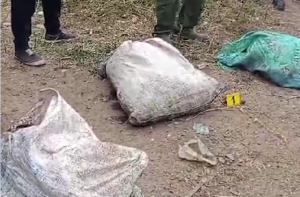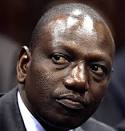France’s Minister of the Interior, Gerard Collomb, was clearly happy on January 1st. Why? No terrorist attack had occurred on New Year’s Eve. Collomb warmly thanked the 140,000 police officers, soldiers, firefighters, and civil security associations who had been mobilized to block any potential terrorist attack. To give just an inkling of the size of this security deployment on New Year’s Eve, consider that the entire French army (land forces only) consists of only about 117,000 active-duty soldiers.
All French governments since 2015 have denied that Islam is at war with France, but the Ministry of the Interior nevertheless mobilized higher numbers of security personnel than the French army has soldiers, to make sure that this New Year’s Eve would be a peaceful event.
In a press release, Minister Collomb said:
“Because of the strong police presence combined with efficiency of protection measures, the festivities of New Year’s Eve were able to happen peacefully for everyone in France.”
Although no terrorist attack took place on New Year’s Eve, calling it a “peaceful” night is, at best, a stretch. In keeping with the annual “tradition,” 1031 vehicles were intentionally burned (compared to 935 in 2016) in the majority-Muslim suburbs of many big cities.
250 cars were torched in the Paris area alone, and eight police officers and three soldiers of the Gendarmerie were attacked and wounded. A video went viral on the internet, showing a mob of “youths” (the euphemism used by the media for African and Arab young men) assaulting and savagely beating a female police officer. She had been trying to disperse a crowd of “youths” attacking a private party in the Champigny suburb of Paris.
In Strasbourg, according to Alliance, a police union, “five police officers were slightly injured, including four victims of fireworks that were used as weapons.” In addition, 70 cars were torched intentionally.
In every big city, dozens of cars were burned, and in the suburbs, “youths” attacked the police.
Even in central Paris, where the police were demonstrably visible, “incidents” resulted. According to Le Figaro, which leaked a confidential report from the Ministry of Interior, there were no end of assaults:
“At 8.50 pm, at the corner of the Champs-Elysées and Balzac Street, gendarmes arrested seven individuals who threw empty bottles into a crowd. The victims could not be identified. The attackers, illegal migrants from Afghanistan, were placed in administrative detention.”
The report also mentions a waiter at the restaurant Le Fouquet’s on the Champs Elysées; he was wounded with a knife while trying to put an end to a fight. This confidential report was dedicated only to violence committed in the Paris area. A far larger report, indexing the violence in all of France, arrived on the Interior Minister’s desk.
All these events — except the car-torchings, which for years have sadly been the New Year’s “fireworks” tradition of the suburbs — are not confined to New Year’s Eve. Assaults and crime are the suburbs’ daily bread. On January 2, 2018, two police officers, who risked their lives to save children from a burning apartment in a Paris suburb, were attacked and stoned by a mob when they emerged from the blaze carrying the children in their arms.
In November 2017, the radio station Europe 1 released confidential data about attacks against firefighters:
“The figures of the National Observatory of Delinquency, released exclusively by Europe 1, show a 17% increase in assaults against firefighters in 2016. 2,280 firefighters were assaulted in 2016, compared to 1,939 in 2015. …firefighters are confronted on a daily basis with increasingly extreme situations. With 366 assaults in 2016, the Paris area is the most affected region, after Aquitaine, in southwest France, with 406 reported assaults. As a result, the police are called to certain areas just to protect the firefighters.”
According to Bruno Retailleau, MP, head of a parliamentary commission on security forces:
“in 2016, half the gendarmes officers (part of the Ministry of Defense) in 2016 that were injured, were injured by assaults. As for the police, weapons-caused injuries for police officers on the ground skyrocketed by 60%.”
Five months after a law was passed to ease the rules of self-defense for police officers, the news channel LCI revealed that the use of firearms by police officers had sharply increased, including “intimidation or summons” (where officers shoot in the air or at the ground), which was up 89%. This type of gunfire is “justified and justifiable,” noted the IGPN (internal affairs department) in a confidential note of July 2017, also revealed by LCI.
A silent war against firefighters and police is in full swing. On January 3, 2018, the headline in Le Parisien was, “When the Police Frighten Nobody.” The same day, Lydia Guirous, speaker of the opposition party, Les Republicains, declared:
“In the suburbs, the authority of the State no longer exists, and impunity predominates. The police are in a state of fear and the means [to respond] is lacking. This sense of impunity must be broken”.
As usual, politicians are minimizing the problem. The government does not consider the spread of urban violence to be terrorism. On January 1, 2018, the Minister of the Interior was explaining away the violence against the police and firefighters as the consequence of “social injustice.” After he congratulated himself for the “peaceful” New Year’s Eve, Collomb talked the same rubbish as usual: namely, that the Muslim “youths” involved in destruction and violence are not criminals, rather they are victims of their “environment”:
“I think it is those neighborhoods that need to be changed. Those huge apartment blocks in the suburbs represent an inhuman environment generating violence… I do not think these neighborhoods can stay that way.”
As usual, the government will try to buy peace with money. Meanwhile, suicides are spreading among police officers. In November 2017, in a single week, five police officers committed suicide in different French cities. On December 3, 2017, a police officer committed suicide inside the precinct of Alençon, in southern France. On December 5, 2017, a security officer of the Ministry of Labor committed suicide in the parking lot of a Gendarmerie precinct. Between January 1, 2017 and December 1, 47 police officers and 16 gendarmes took their own lives. It was an all-time high.
 Pictured: Police and fire service vehicles at the site of a terrorist attack on the Champs-Élysées in Paris, France, on April 20, 2017. The attacker murdered one police officer and wounded another. (Photo by Aurelien Meunier/Getty Images) Pictured: Police and fire service vehicles at the site of a terrorist attack on the Champs-Élysées in Paris, France, on April 20, 2017. The attacker murdered one police officer and wounded another. (Photo by Aurelien Meunier/Getty Images) |
Yves Mamou, author and journalist, based in France, worked for two decades as a journalist for Le Monde. He is completing a book, “Collaborators and Useful Idiots of Islamism in France,” to be published in 2018.























